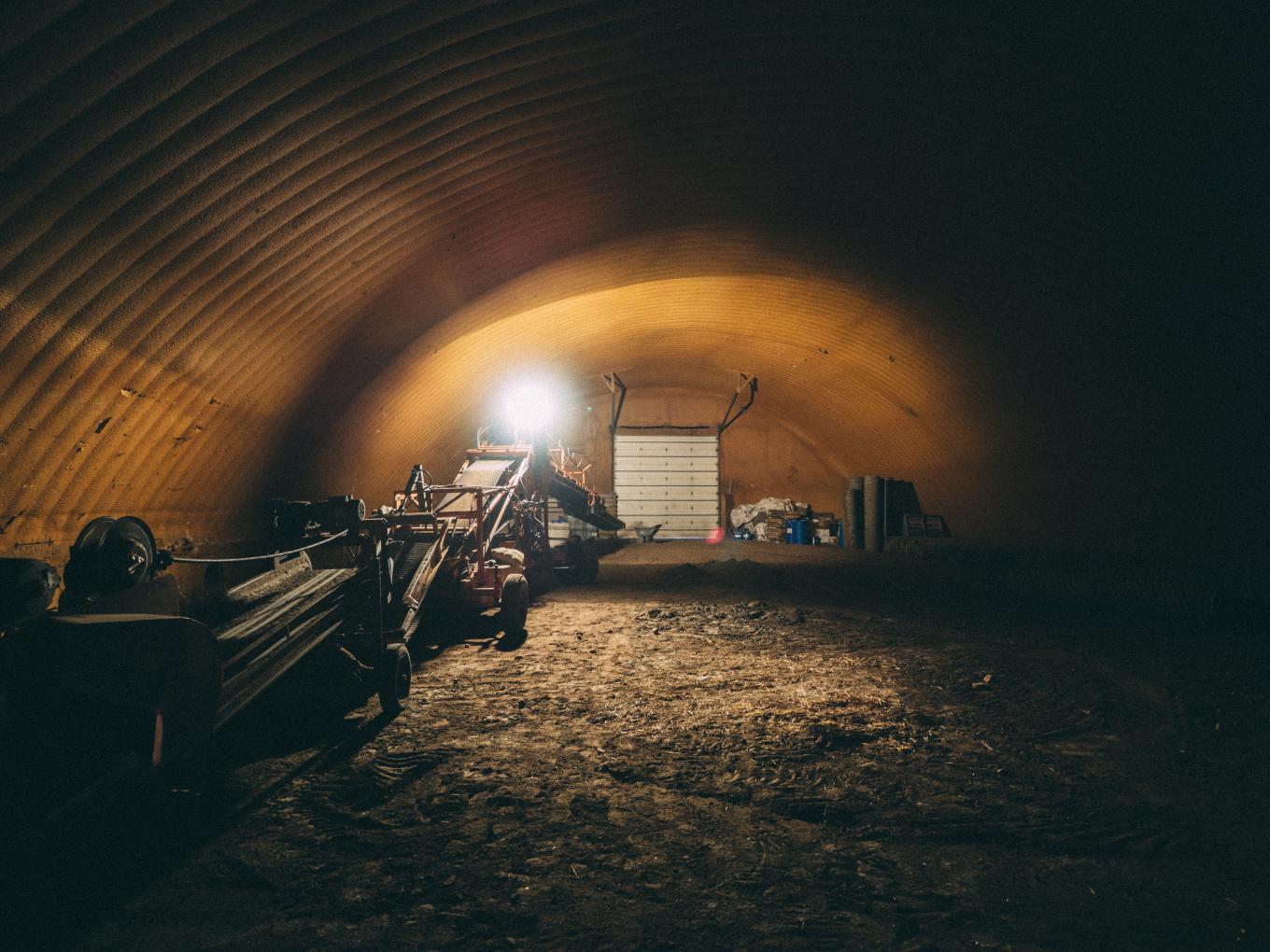
The Mad Agriculture Journal
Meet Sarah Jones of Jones Farms Organics
Published on
April 09, 2024
Interview by
Jonnah Perkins
Photos by
Sophia Piña-McMahon & Jane Cavagnero
Mad Media producer, Jonnah Perkins, sat down with Sarah Jones, of Jones Farms Organics, to learn about what it’s like to grow potatoes in an alpine valley ecosystem and why Sarah is so passionate about rye. Their conversation spanned mountains, deserts, and motherhood, and ultimately landed on why a farmer would buy a gas station diner. Like most of Jonnah’s farmer-to-farmer conversations, we can’t fit it all onto the page, so here we get a peek inside of Sarah’s journey, from the mouth of the farmer:
Denver to Sand Dunes
Michael and I moved down to the San Luis Valley from Denver on August 7th of 2017. I always tell the story where we arrived at golden hour after a rainstorm to a double rainbow. When people are like, Did you look back? Do you feel like you made a mistake? Do you miss city life?, I’m like, No!, the doors opened up for us, and we just felt at the right place and the right time.
We felt like we were making the right decision, and moved down with a three-year-old and our three-month-old daughter, and then, two years later, had our third daughter. We now have three little girls. Especially with COVID happening not that long after we moved down, we’re so grateful that we were living where we are in the community that we’re in, and getting to be on the land every single day.
We’re now growing 20 varieties of potatoes, and 7 varieties of grains. The ones that we are growing that have worked well for us are Sonora, Yecora Rojo, Rouge de Bordeaux, Ryman Rye and Wrens Abruzzi Rye. We’re growing Durum for an amazing pasta company Pastificio, and we trialed millet this last year, and we’re always growing multi-species cover crops in our rotation.
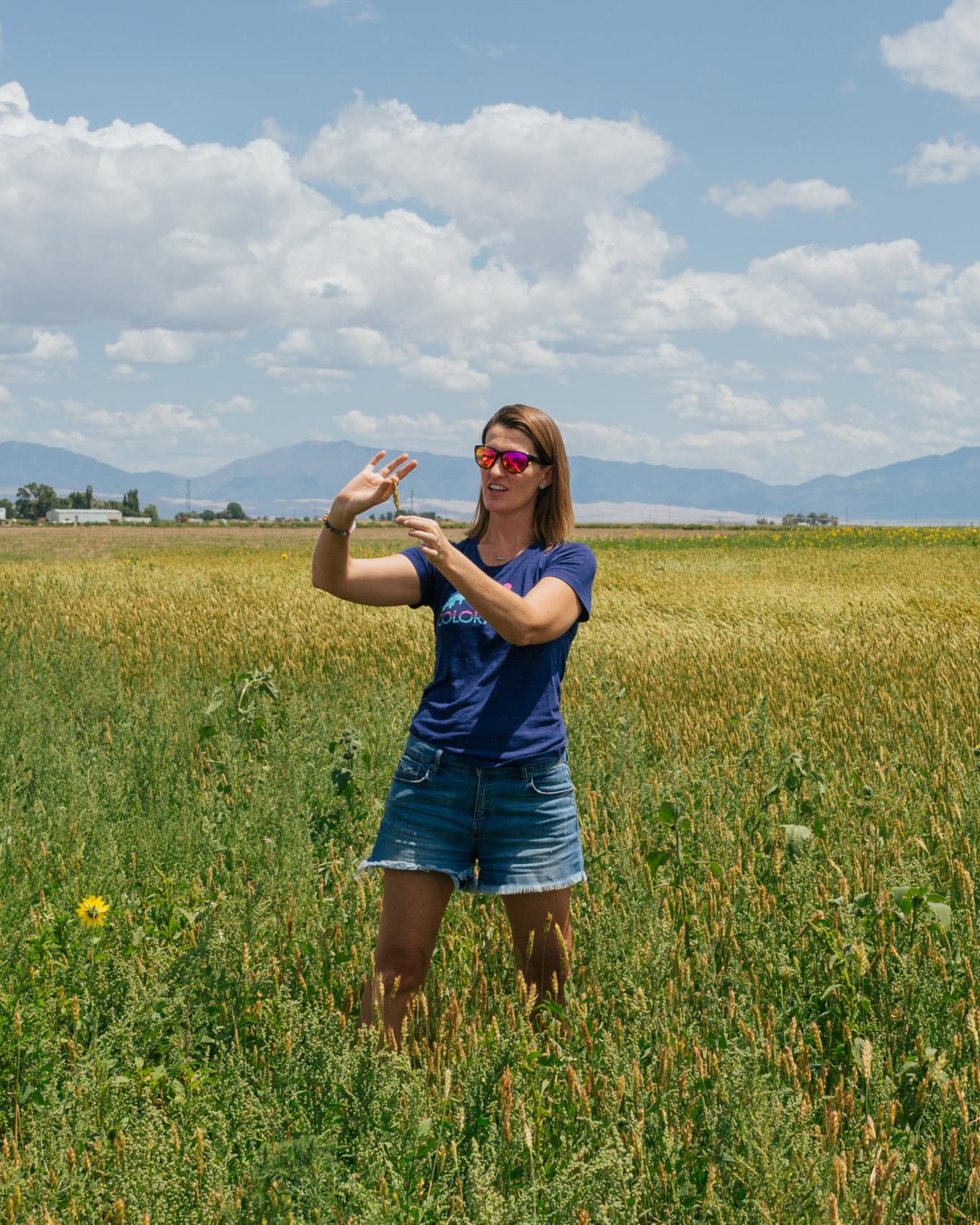
On the San Luis Valley
The San Luis Valley is known for the Great Sand Dunes National Park and Preserve. It’s this beautiful park with crazy sand dunes out of the middle of nowhere. It’s the largest alpine valley in the world, which is a funny term.
Agriculturally, we’re the second-largest potato growing region in the country, which is interesting. A lot of people, even those from Colorado, don’t even realize potatoes are grown here. Not only are they grown here, we’re number two in the country.
We are fresh market producers. Idaho is known for processing potatoes: potato chips, french fries, McDonald’s, Frito-Lay. Most of those potatoes are grown in Idaho, whereas the potatoes in the grocery stores, bulk potatoes, or in bags, that’s fresh market and a lot of those are from Colorado. The biggest crops down here are really potatoes with barley in rotation every other year.
The San Luis Valley is also known for crazy windstorms, specifically in the spring. Unfortunately, a lot of farms keep their fields fallow and don’t plant anything after potato harvest in October. So from October to the following May or June, we have started experiencing more and more severe brownouts or dust storms, which I am personally very passionate about working to change about our region.
The town of Center, Colorado about 10 miles from us receives the lowest average precipitation in the state at around 7 inches, compared to Wolf Creek, about 60 miles from us receives the highest on average at around 50 inches.This leads to a lot of water scarcity. We are over-pumping our aquifer. Potatoes, barley, and alfalfa, which are the main crops down here, use a lot of water and are really hard on the soil. Specifically potatoes, because you can’t have a no-till potato. When you harvest potatoes, you’re disturbing the soil. We are experiencing increased winds, less snowfall, and just an increase in pumping the aquifer.
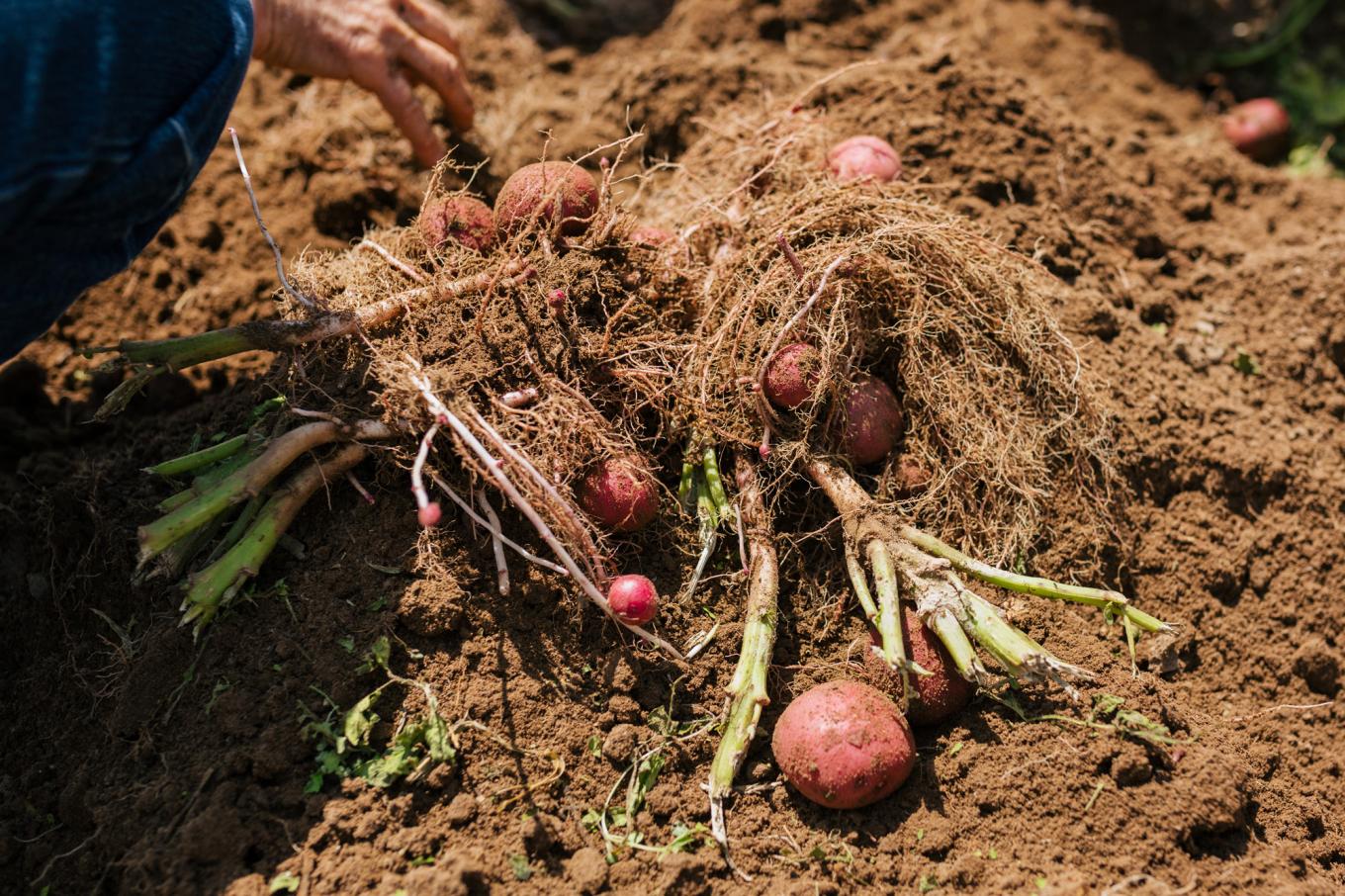
Why potatoes
Potatoes grow great here because we have a similar climate and altitude to Peru where potatoes were first cultivated. We’re at about 7600 feet and the high elevation means that we tend to have warm days and cool nights. This not only grows healthy plants, but it also means that we have fewer insects and pest pressures. Couple this with the fact that we have a very dry climate that keeps our blight and disease pressures low and you have almost the perfect place to grow organic potatoes.
A lot of our market is now small potatoes, which use half the amount of water as a conventional russet potato. We have found a niche that works for us. With some of our direct customers buying different varieties and different pack sizes, and then planting those varieties based on the fit and the demand that we’re able to create with them. We now get to grow our colorful Colorado medley with 7+ different varieties of potatoes in one batch. We sell them in 30-pound cases and we’ll add 1.5 pound bags this coming season.
I work with 30 direct customers, including Whole Foods, Amy’s Kitchen, and Barton Springs Mill. We get to grow all of these amazing specialty potatoes and grains with the emphasis on bringing back flavor, color, diversity, and nutrition to what we grow. It’s really fun and much easier on our aquifer.
I’ve had friends and chefs say, I didn’t know potatoes tasted like this, or, these are the best potatoes I’ve ever had. It’s really fun and enjoyable, and such a good reminder of why we’re doing what we’re doing, but also pretty much a full-time job for me in terms of the sales, marketing, logistics, and storytelling.
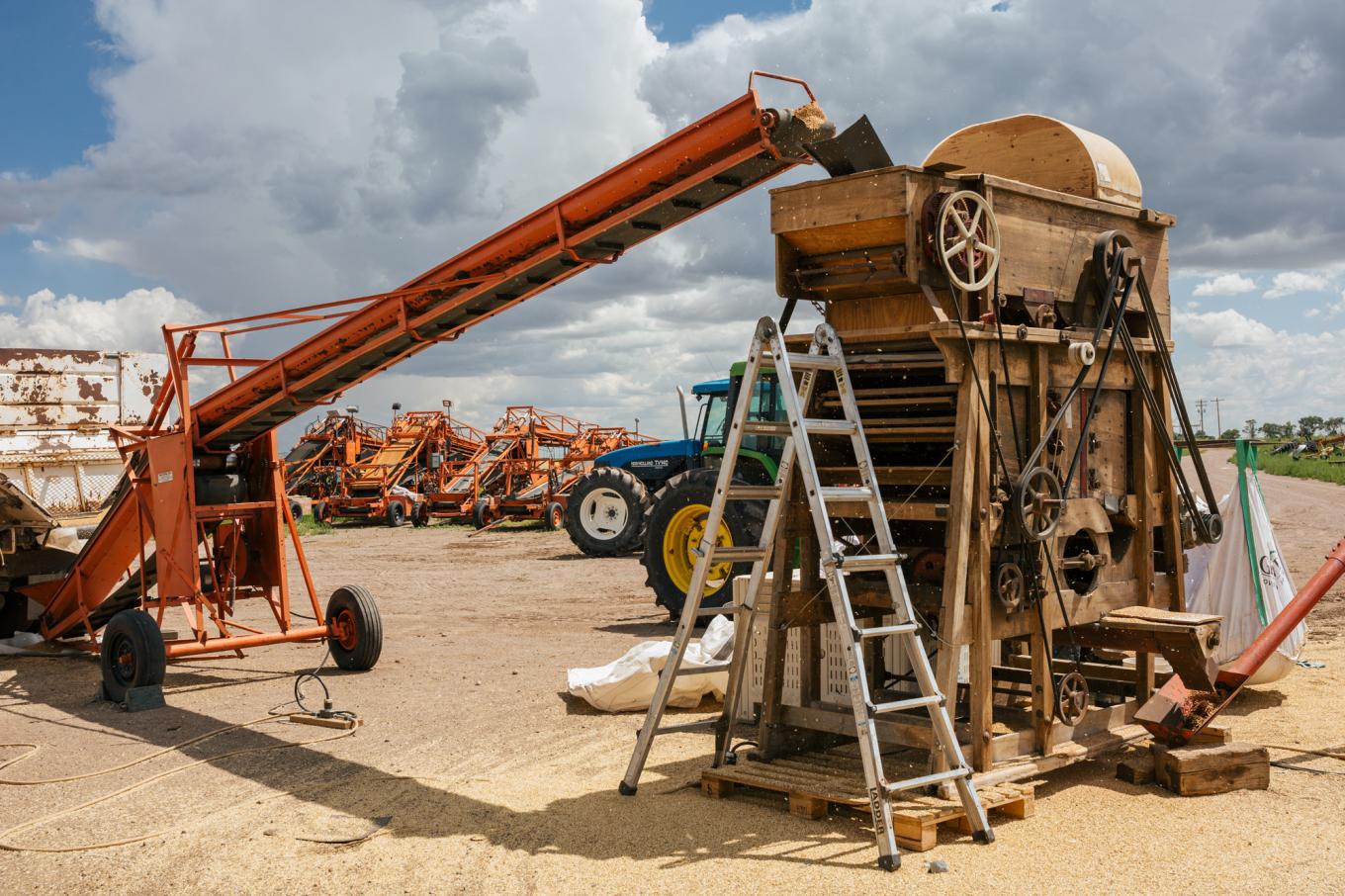
Building the Rye Resurgence Project
When we moved down here, we were really looking for other crops that we could be using to diversify. Diversify from a market, risk, rotation, and cash crop standpoint. We started hearing a lot about heirloom organic wheat. I did what I love to do, and just picked up the phone and started cold calling. Everyone I would talk to would give me another couple of people to call.
I just followed that path and finally was talking with a chef that a lot of people had told me to call. I asked him the top questions I ask whenever we’re looking at a new crop: What is there a need for? What grains are you interested in? What kind of volume are you interested in? What does the pricing look like? Then that brings me to the farm level of figuring out the logistics, do those varieties grow down here, who has grown them, the yield, what is the water usage, what pricing do we need, and whether it needs to be cleaned. Thinking about cleaning equipment, transportation, and logistics are our top priorities on the farm level.
Through growing those grains, we have gotten a demand for our Wrens Abruzzi Rye, and our Ryman Rye. With Ryman Rye, we have been growing it as a cover crop since the ’80s. We would plant it after potato harvest in October to help protect the soil during the rest of the fall, winter, and spring months when the wind blows. It was always just a cover crop.
Then through expanding into grain world, we started getting asked for rye. Because we just didn’t see a demand for it, although we also weren’t trying to see a demand for it - one of those Catch 22s. Through that, we’ve been able to sell our rye and see an increase in the demand for rye, specifically a couple of different varieties that have different growing & flavor profiles.
I now work with a handful of distillers, maltsters, millers, and bakers selling our specialty rye. I joke, but little ol’ me not having a background in ag, not ever being a salesperson, getting to see the demand increase with just having those direct relationships and telling the stories and getting to know distillers and bakers. Knowing that we can sell all of the rye that we grow for a cash crop and grow it out to the following fall to keep our soil covered & protetced is a really incredible part of our regenerative rotation. It is the ultimate win-win. Rye uses one half, if not one third the amount of water, as potatoes, alfalfa, and barley. It really is this beautiful, beautiful crop for us, and checks all of the boxes which is not easy to do in ag.
The success we have had with rye raised the questions for me: This is working well for us. Why aren’t other farmers growing this? Why are some people leaving their fields fallow? Why are we having brownouts and dust storms every spring, and why is it getting worse? So I started asking our neighbors about their experiences with rye and I was mostly met with farmers not getting a high enough price for their effort, or their water and time didn’t make sense with the lack of demand.
Through hearing some of that, it got me thinking: What if we could scale up what we’re doing on our farm? If we had a Rye marketing and sales team and we helped create the demand knowing that the farmers would plant it, what positive ecological impact we could very quickly have on our soil, our aquifer, our community, and, in return, growing this beautiful product that can be used in so many things. It’s so versatile and so delicious. Also note Rye does NOT taste like caraway seeds. Unfortunately caraway seeds are often used in Rye bread recipes and are also very flavorful and not for everyone so the idea of Rye flour being used in desserts is often odd to people however Rye is very neutral & pairs incredibly well with chocolate. Some of the best brownies I’ve ever had were 100% Rye flour. We now use a percentage of Rye flour in all of our baking including chocolate chip cookies, waffles, muffins…
I went to a friend who works for the San Luis Valley Water Conservancy District with the idea of talking to a handful of farmers to encourage them to grow rye both for market and cover crop. Then we would help them sell for a higher price with the intention of creating demand in the market. She loved the idea and wrote a grant through the Colorado Water Plan Grant. Our concept is that with the intention and the budget to go out and tell the story of what is happening in the San Luis Valley with the dust storms and the strain on the aquifer to bring attention to a solution. Instead of focusing just on sales, it’s building the partnerships, telling the story, creating the demand from the buyers and the consumers. Now the farmers can plant it and harvest it and we’ll work with them to help them sell their rye.
It was supposed to just be a fun passion project but it’s taking a lot of time & energy and I’m really passionate about it. I feel so much pressure because I’m not just selling our farm products now, I’m telling the story of an entire area, and helping represent 10 different farmers trying to sell their rye, and helping them make a profit off of doing the right thing for the soil and the planet.
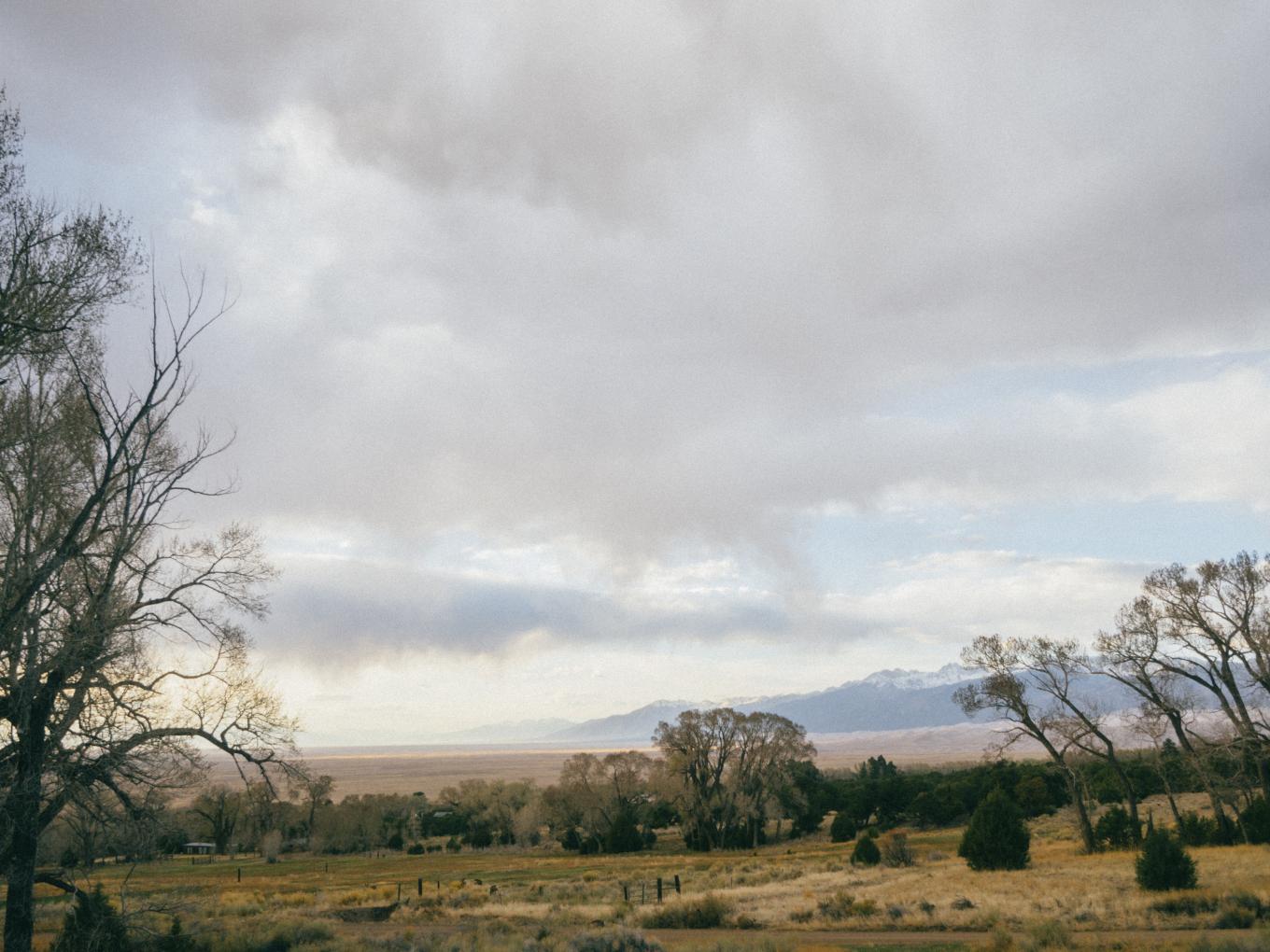
Diversifying the portfolio
When we first moved down here in 2017, there was this great little cafe-gas station-convenience store called the Hooper Junction on Highway 17. It was the hub for our town. We’d stop in at lunch, you’d grab a burger, and a lot of farmers would be in there. You would never go in there and not know someone. It seemed to always be busy, and it was just a cool little spot to go in and catch up with people. They closed in 2019, and it was left untouched for years.
Finally, it was during Covid, I couldn’t take it anymore. I needed to know what was happening and why. So I called up the owners and asked if it was for sale, and what they were wanting, and trying to get additional answers on why they closed it. They were super open and gave me all the information.
I started to pitch it to anyone that would listen, any friends and family, any entrepreneurs that would come down, or even my customers in Denver. A lot of people were interested, but some of the questions they had about it, like P&Ls, and some of that background info just wasn’t available. After a couple of years, the opportunity came up just at the right time with the owner, and we were able to negotiate a price that worked for both of us. On May 1st of 2023, I closed on the property. It’s 10 acres with the cafe, gas station and convenience store.
I was able to get it owner financed, and it was an incredible and also insane opportunity. Part of the leap of faith was that I was able to connect with an amazing local woman (Angelica Quintana) who had her own businesses called the Ruby Rose (cottage bakery) and Prep Fuel SLV; she was renting a commercial kitchen & making delicious ready to go meals to help people save time and eat healthier using local food. She’s an incredible chef. So I went to her with this idea and said, I am looking at this property, but I know that I wouldn’t want to run the restaurant, is that something you would be interested in? We met and she was totally in. So I bought it with the faith, and hope, and trust that once it was remodeled, that she would take it over and sign a lease.
I like to say I ran the sprint from May to August, and got it remodeled and up to code, and she moved in in August of 2023 and she is running the daily marathon; the Ruby Rose Cafe and Convenience Store is open, and such a great space for the local community.
Her busy season is approaching (May-September) with the Great Sand Dunes National Park traffic, which is exciting. We’re both cheering each other on daily. My hope was that it would be a meeting place, a hub for the local community as well as a fun stop for the people driving down from Denver. It is on one of the main routes (Hwy 17) to the Great Sand Dunes National Park and Preserve, so it gets thousands of visitors driving through that stretch of road every year. We have a lot to offer in this little but mighty valley, but driving through, you wouldn’t necessarily know that. So hopefully this can be a place to really show people what we’re about, and what we have to offer, other than just the incredible sand dunes and the breathtaking Sangre de Cristo Mountains.
